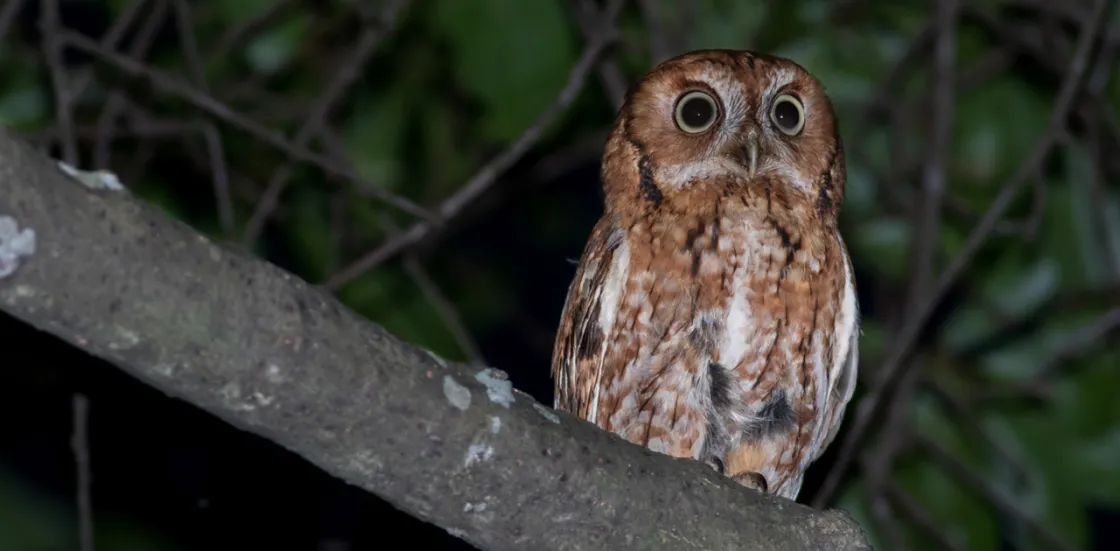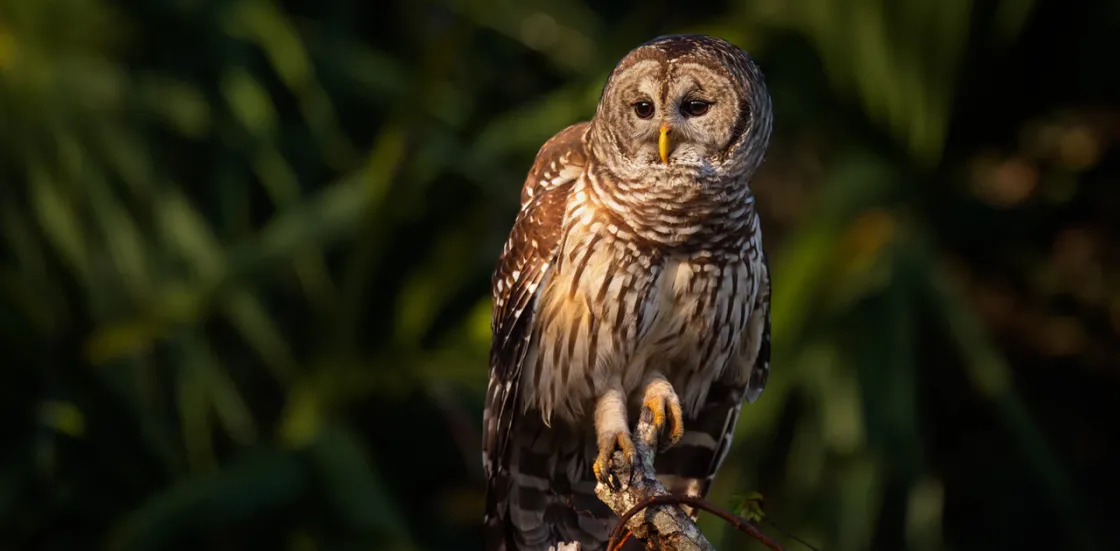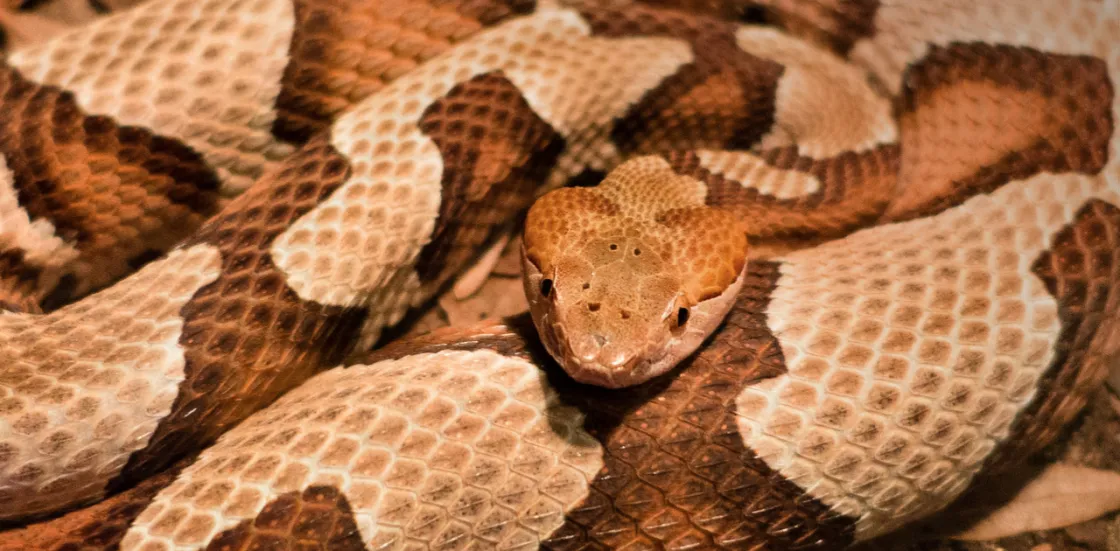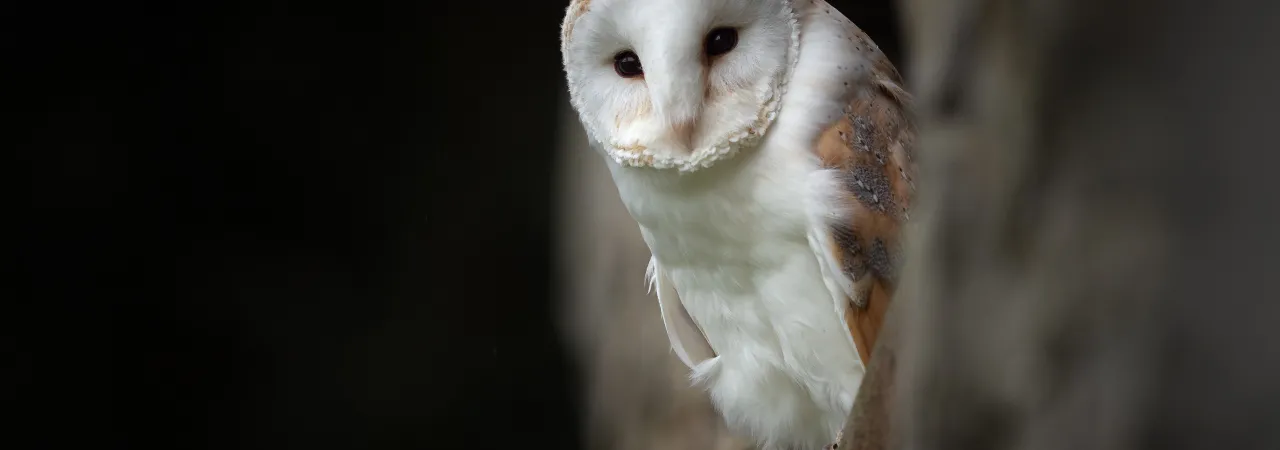The Season of Spooky Creatures
It’s that time of year when daylight gets shorter, nights get longer, and leaves change colors as if by magic, carpeting the ground with their many shapes and sizes. Yes, it’s autumn!
Halloween brings a special magic to the transitional season of autumn, with its ghosts, goblins, spiders, snakes, owls and other critters with a reputation for being spooky! These creatures are probably enjoying the season, too, and some find our American battlefields fitting homes, if just for a time.

Owls sometimes have a sinister reputation, with their nocturnal habits. At the Petersburg National Battlefield in Virginia, visitors can typically find three common species of owls year-round: screech owl, barred owl, and great-horned owl. The screech owl is small, only weighing approximately four to nine ounces, has yellow eyes, lays its eggs in tree cavities and eats small birds and mammals. The barred owl is a little larger in size, weighing about sixteen to thirty ounces, has dark brown eyes, and in addition to small birds and mammals, eats amphibians, reptiles and fish! The great-horned owl is even larger, weighing approximately thirty-two to eighty-eight ounces, has yellow eyes, and enjoys mammals and birds for sustenance, in addition to insects, reptiles and fish.

Barn owls are one of the spookiest owl species and are also believed to inhabit the Petersburg National Battlefield, among other battlefields. Don’t let their seemingly sweet heart-shaped faces fool you! They are the strictly nocturnal, silent predators in the shadows, making them difficult to trace and count. Under the veil of night, barn owls hunt their prey in open fields and meadows, enjoying mostly small mammals. Unfortunately, barn owls are declining in some areas due to habitat loss. The preservation of battlefields, once sites of devastation, can produce peaceful refuge for barn owls through the conservation of trees and grasslands located there and the multitude of places where they can nest, shelter and rest.
Snakes are a very popular battlefield resident. Yet another feature at Petersburg, visitors can happen upon the several species of snakes, including the eastern rat snake, black rat snake, rough green snake, northern water snake, and the garter snakes. These species are visitors to many other battlefields, too!

There is a record of one venomous species being observed at the Petersburg National Battlefield, the northern copperhead. This large, social reptile has also been sighted at many other parks on the east coast, from Horseshoe Bend National Military Park to Antietam National Battlefield! Northern copperheads are primarily nocturnal in the summer and hibernate over the winter until around April. They generally eat small mammals. It is likely that they are just as frightened by us as we are by them!
Don’t be scared by nature this Halloween, but please be mindful of the seasonal changes and the unique creatures during your battlefield visits, especially the Petersburg National Battlefield!
Kathy Robertson
Deputy Director, Real Estate
American Battlefield Trust






